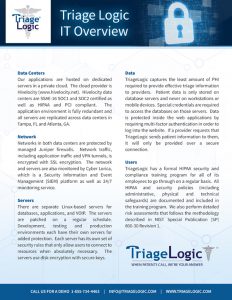In this blog series, we have explored some important issues to be aware of when triaging newborns and normal newborn reflexes. These included normal newborn reflexes, the cuddle paradox, poor feeding and suck issues, increased sleep, color changes, unusual cries, repeat calling, and more.
In Part 2, we share some common caller scenarios and how to handle them.
Common Caller Scenarios
Newborns can be especially difficult to triage because there are two or more clients to take into consideration: the infant and the new parent/s. Sometimes the parents just need reassurance that what their infant is displaying is normal, while other times it may not be as clear to the triage nurse.
Below are some cases of typical teletriage calls from new parents, and how to triage them and use the most appropriate triage protocols:
Q: The mother of a 2-day old calls at 9 pm. She tells the nurse, “His head seems so big compared to the rest of his body”. Upon assessing the baby, you find out he was Full Term (39 weeks), vaginal delivery, no complications, healthy, 8lb 7oz. Skin coloring looks good, he is breastfeeding with a strong suck and seems satisfied after feedings. He wakes himself every 3-4 hours to feed. No fever (rectal 98.1). What protocol and disposition should the nurse decide on?
A: Home Care. The cone shape is more than likely caused by the infant passing through the birth canal and should resolve in a few days.
Q: The mother of a healthy, full-term baby boy calls and tells the nurse, “He is 2 weeks old and has pimples!” She has visited the doctor and the boy was diagnosed with “baby acne”.
A: Reassure the parent that more than 30% of newborns develop “baby acne”, it usually appears between ages 2-4 weeks and resolves without treatment by 4-6 months.
Q: A very anxious mother calls the nurse and says, “my 7-day old son stops breathing for about 5 seconds and then breaths really fast after”. After asking further questions, the nurse determines that the baby is full-term, healthy, feeding well, no color changes during apnea episodes, not breathing more than 60 times per minute and is afebrile. What protocol and disposition would the nurse choose and how would she reassure this mother?
A: First month or so transient breathing pauses of less than 10 seconds followed by faster or “catch up” breaths are normal as long as the resting rate is not more than 60 times per minute and the baby doesn’t turn blue.
Q: You receive a call from a new momma panicking because her 3-day old daughter has a mucus-like bloody discharge in her diaper. Which protocol and disposition should be used and how should the nurse reassure this momma?
A: A clear/white vaginal discharge between ages 3-10 days is more than likely estrogen levels decreasing. Occasionally the discharge may be pink or blood-tinged and shouldn’t last more than 3-4 days.
Though newborns can be difficult to triage, the relationship and comfort a triage nurse can give to a new mother are priceless. New parents can be anxious and a bit overwhelmed at times when it comes to their little ones. As a triage nurse, it is important to be calm and comforting. Always being prepared and educated on what symptoms are normal and which ones need to be evaluated further allows a triage nurse to be effective on the phone.

How secure is your patient data?
Find out the steps TriageLogic takes to protect patient data and ensure that our products are properly secure.
Looking to improve staff communication,
engagement, and health?
Check out our newest solution.

to decrease staff
healthcare costs?
Ask your HR manager to call us today.






